TechRadar Verdict
Anyone keen to have more comprehensive video coverage will love the Rove R3 Dash Cam. It captures the view to the front of your vehicle, backs that up with a rear-facing camera, and benefits from shooting cabin view footage too. It’s nicely designed, feels well made, and has a simple, straightforward installation process. Video quality is more than a match for most other premium dash cams on the market, with day, night and bad weather footage all looking very good indeed. Built-in GPS, Wi-Fi and a supplementary app complete the package.
Pros
- +
A complete video surveillance solution
- +
Includes a trio of 1440p, 1080p and 1440p cameras
- +
Easy to set up and use with an app to match
Cons
- -
Hardwire kit is an additional expense to think about
- -
Parking mode might be too sensitive for some
- -
Routing the cables takes the usual amount of time
Why you can trust TechRadar
Two-minute review
If you’re looking for a dash cam that can do a little bit of everything, the Rove R3 Dash Cam is well worth investigating. Even some of the best dash cams on the market don’t always come with all the features and functionality needed for comprehensive protection. The Rove R3 Dash Cam carries an impressive specification, with a 3-channel touchscreen dash cam being the core component.
However, armed with cabin and rear cameras too, it delivers a comprehensive range of video coverage, including 1440p video capture out the front, 1080p footage in the cabin, and 1080p out the back. There’s voice guidance, built-in GPS and 5GHz Wi-Fi, plus a very practical parking mode feature for keeping tabs on things when you’re not in your vehicle.


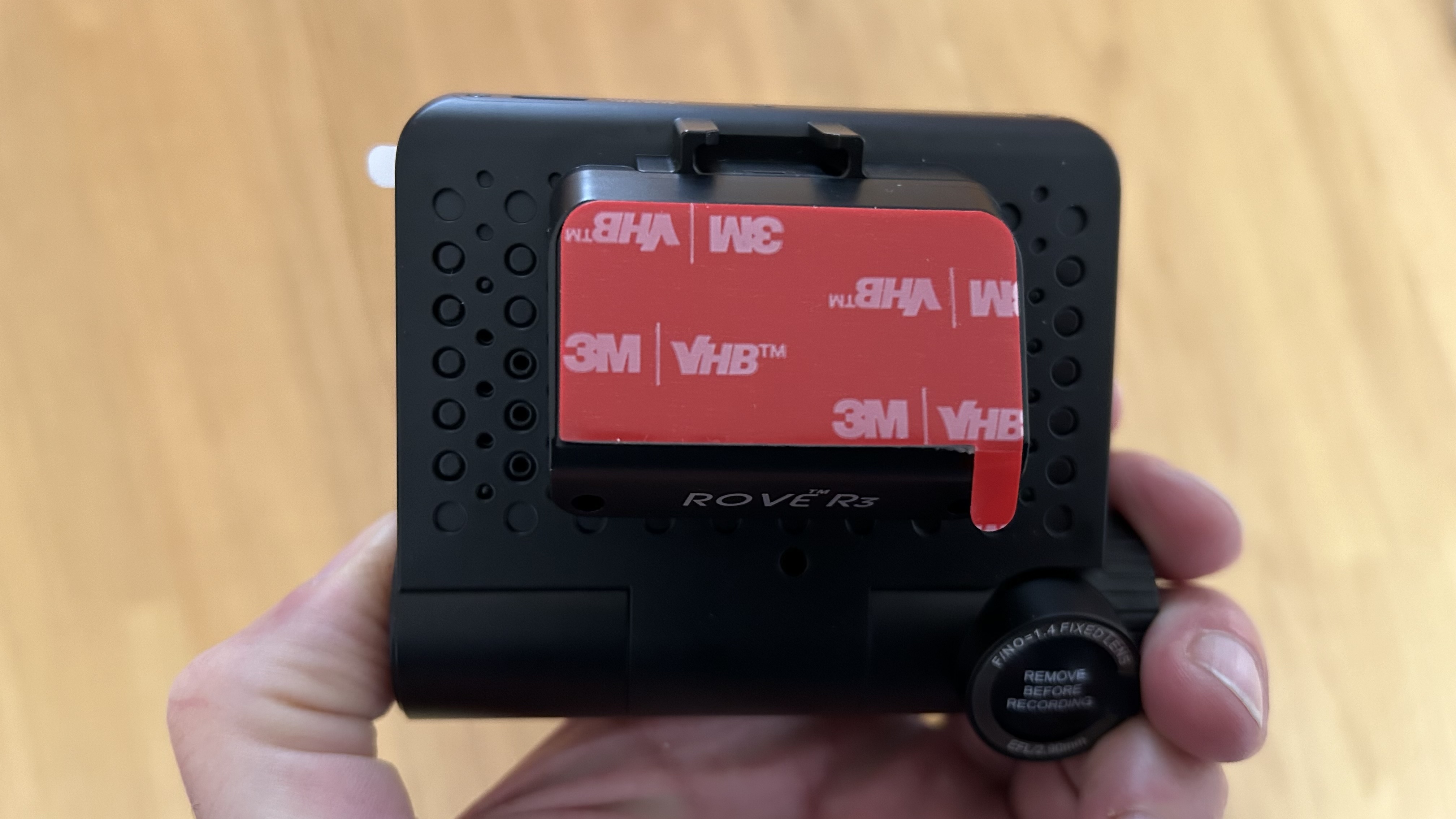
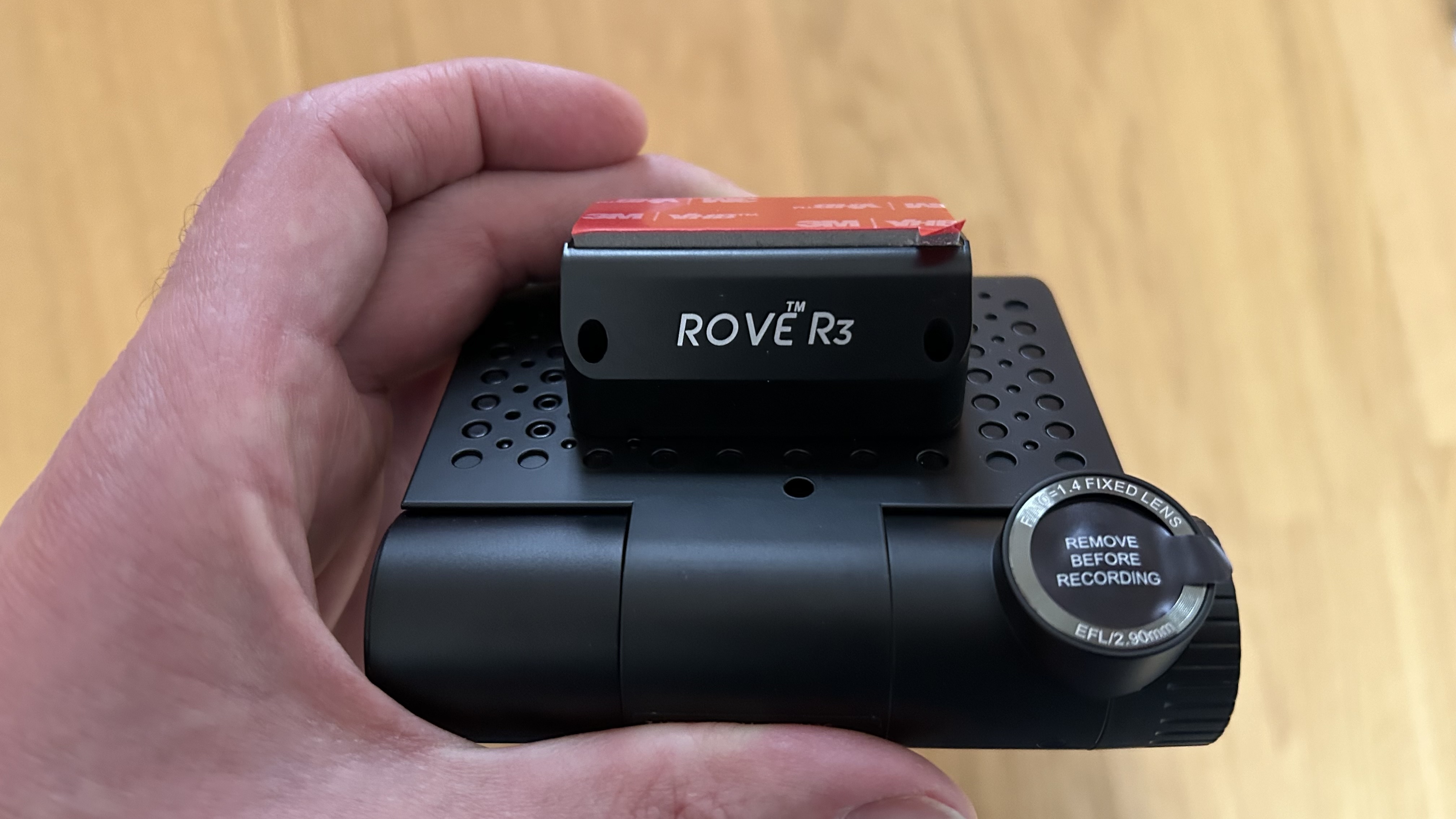



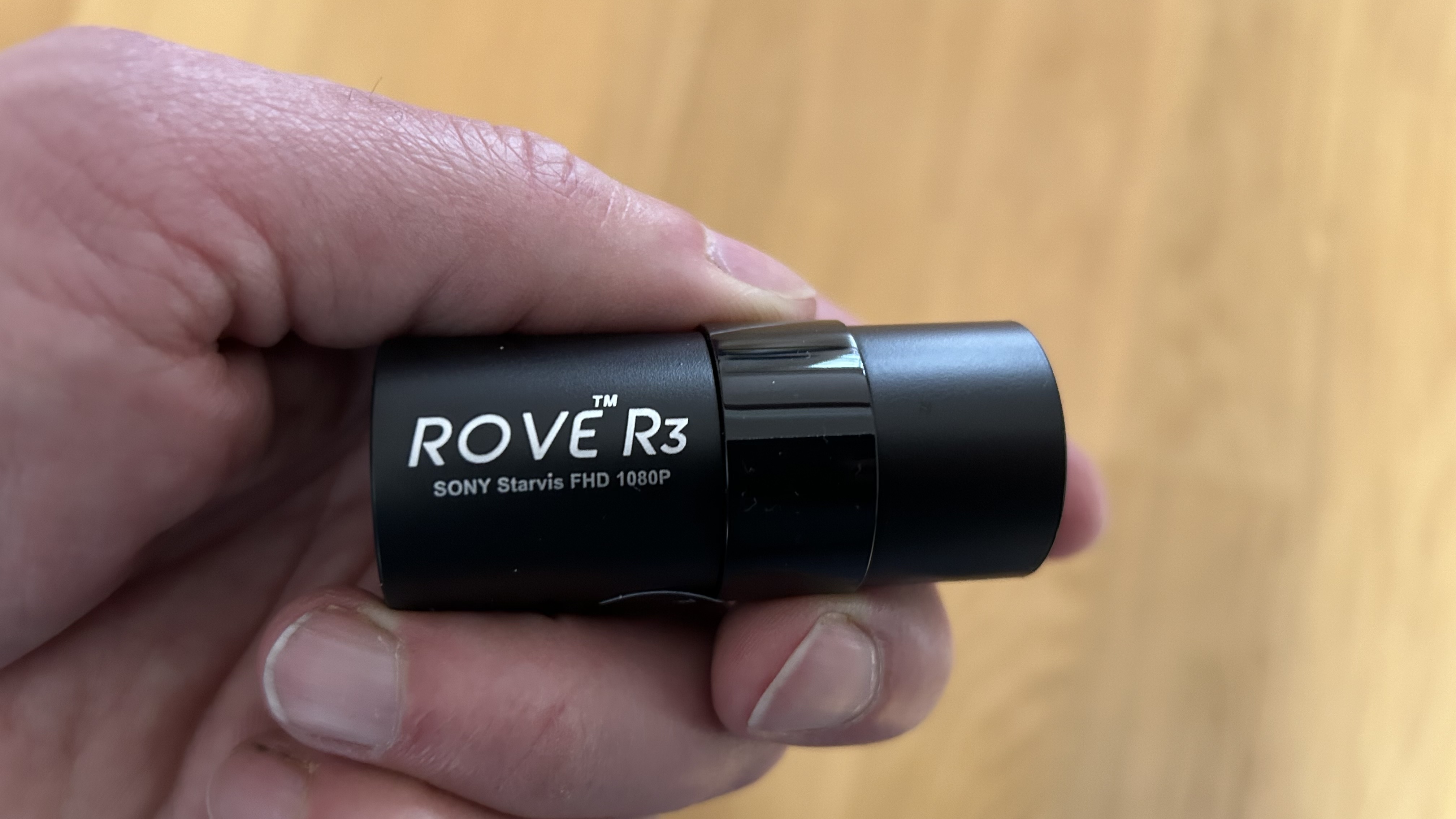


If you can put up with all the pop-ups on the official site, the Rove R3 Dash Cam is available direct. Your best bet is to head to Amazon, where the RRP of $399.99 is currently discounted to $259.99 – though this could obviously change at any time. The package comes with everything you need, including front and rear cameras and all the accessories for fitment and use. However, a hardwire kit and microSD cards are available as extras.
Rove makes a big deal about this model being powered by a Super Capacitor, which is mentioned quite a lot in the promotional blurb. In other words, the dash cam opts to use one of these over a lithium-ion battery.
It makes no difference in the grand scheme of things if you’ve got the camera connected by default anyway. Having said that, Rove reckons this makes it more useful to folks who might encounter extreme temperatures ranging from -4°F (-20°C) to +158°F (+70°C). Extreme adventurers take note.
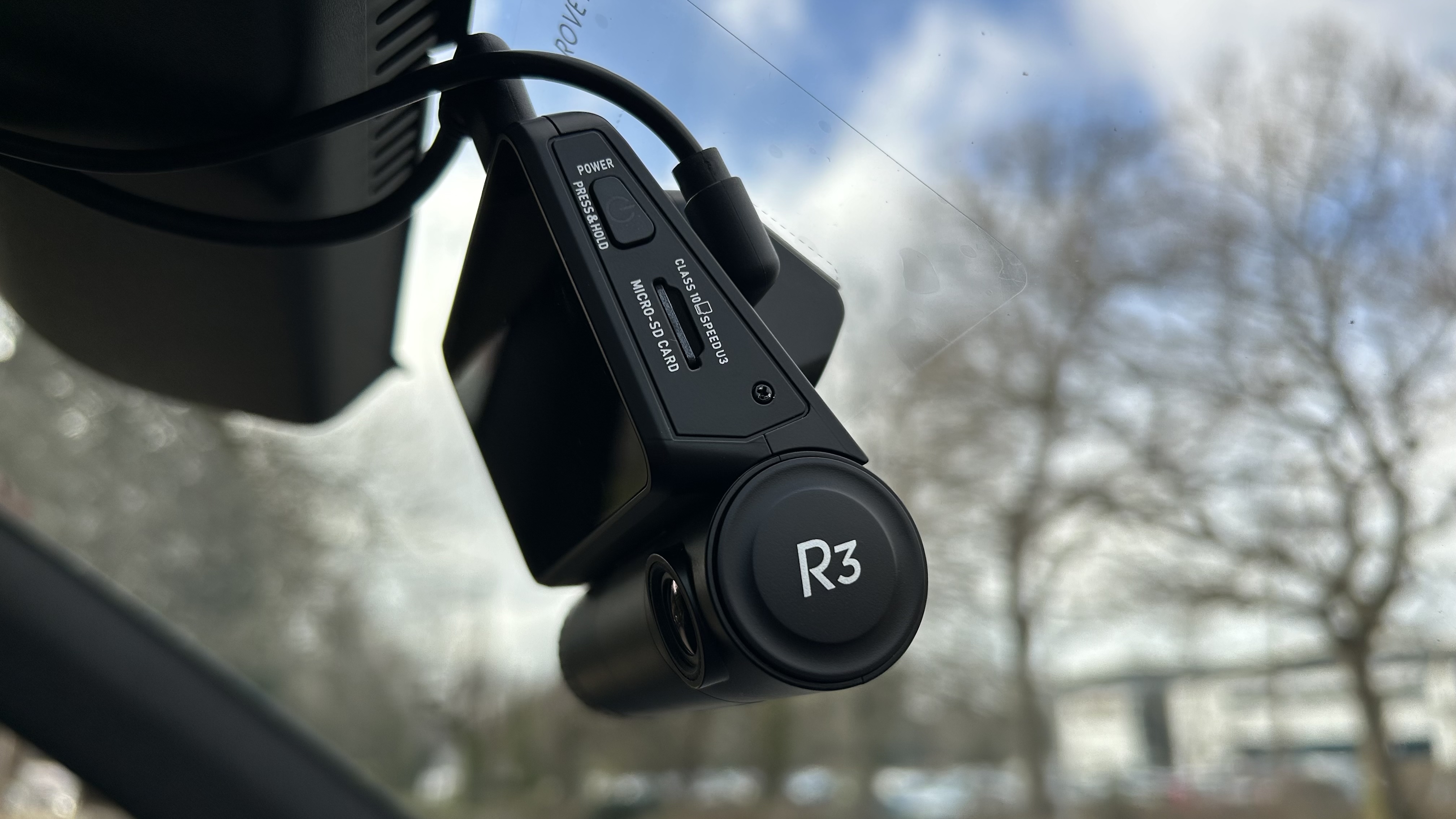
Rove R3 Dash Cam: design
The Rove R3 Dash Cam arrives in a box that flips up to reveal just about everything you need from a complete solution dash cam package. The artwork looks like it was designed using a home desktop publishing package and is quite chaotic in places, but, looking past that, the initial impressions made me keen to get the Rove R3 Dash Cam set up.
Full marks should go to Rove for providing a comprehensive, full-color manual that outlines all the steps for getting set up and how to use video once it's been recorded. There’s a supplementary app for both iOS and Android too. it's possible to use everything without calling on it if you’re not fussed, but it does enhance the overall user experience if you do.
Also inside the box are the main camera, a smaller rear camera, a 4.8 AMP dual charger plug, a suction mount, a wire trim tool, a 2.5ft USB Type-C data cable, a lengthy rear camera cable, a 12ft USB Type-C power cable, cable hiding clips, electrostatic films, a wet cleaning pad, and spare 3M adhesive stickers.
Sign up for breaking news, reviews, opinion, top tech deals, and more.

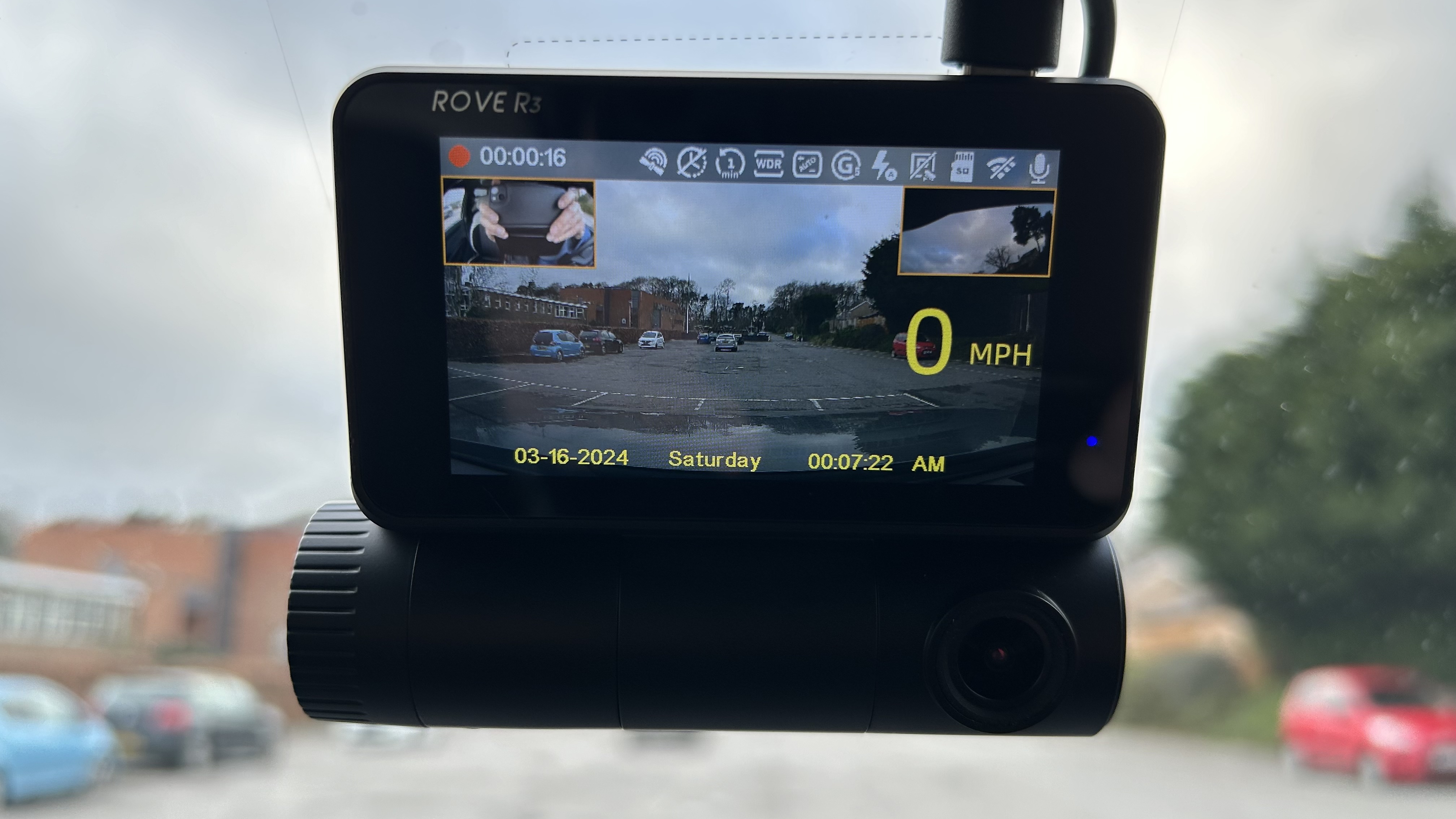






The build quality of all the components feels as good as that found on any of the other best dash cams. I like the robust feel of the main camera and the 3-inch screen is big enough to touch even if you’ve got chunky fingers. The design is also nicely laid out: I quickly knew where all the cables needed to go as they’re marked up logically. All I needed to do was pop in a microSD card and start plumbing it all in.
- The Rove R3 is available on Amazon US for $399 though look out for discounts – it's currently $259
Considering the Rove R3 Dash Cam is a complete solution package, there’s inevitably time to be spent sticking the cameras on the front and rear screens. I made use of the electrostatic sheets, which saves getting your screen covered in gum from the adhesive if I have to take it off again. The wiring, especially for the rear, takes further time to push in around the headliner, but I found the included tool made fairly light work of that. It all plugs in easily enough, though.
I especially like the way you can mount the main camera as it is, straight to your screen. Alternatively, there's the option to use the mount, which means it can be more easily positioned if any adjustment is needed. I got lucky the first time with my screen-mounted route, but either option works well depending on your requirements. Usefully, the lens in the main camera can also be twisted in a circular motion, so the view of the road can be adjusted easily.

Rove R3 Dash Cam: Performance
Setup took me about 30 minutes all told, which is reasonable. I then powered up, which happens automatically if you’re plugged in, and had to pick through a few options to configure the camera.
It involves common tasks, such as formatting the memory card (which was included in my test example but isn't normally), setting the date and time, choosing a time zone and carrying out any customization options. I plugged the dash cam into my 12V electrical socket, though you can buy a hardwire kit if you’re looking for a permanent installation.
There’s a small button on the side of the camera to manually power up, but, once installation is complete and it has power, the Rove R3 Dash Cam engages its video recording mode automatically.
Conversely, the Rove R3 Dash Cam will stop recording if you power down your ignition (or unplug it) within 1 to 2 seconds. It will save the last video being recorded, so there’s no fear of losing any footage. I felt happy to use the camera in its default setup and settings arrangement, but dipping into the menus lets you easily tweak most aspects of the functionality.
Perhaps my favorite aspect of the Rove R3 Dash Cam is the three-channel coverage thanks to having a front camera, a rear-facing one, and the lens built into the main unit that covers the cabin area. Adding to the appeal is the built-in GPS Geotagging (incorporated into the mounting point of the main camera), which means the footage always has live speed and location data as part of the capture process. Getting footage off the cameras was easy too, with dual-band Wi-Fi (5GHz and 2.4HGz) straight to the app proving handy.
I removed the card and reviewed the footage on the larger screen of my laptop, with crisp and clear results returned by all three cameras. The 150-degree view provided by the f1.4 front lens, which uses a 5-megapixel OmniVision OSO5A10 CMOS sensor is solid and more than usable for picking out the definition on number plates and the like. The cabin and rear cameras feature f1.8 a 140-degree field of view with 2-megapixel Sony Starvis IMX307 sensors on board.

Overall, after-dark footage was impressive, with, again, plenty of definition coming from all three cameras. The Rove R3 Dash Cam seems to react well to changes in light too, even inside the cabin as I moved past street lights, which can frequently make footage look less than brilliant. The G-Sensor tech, which works for the parking monitor, only engages if it’s hardwired, so I didn’t get the chance to try this. Aside from checking the sensitivity though, I see no reason to doubt the quality of the footage it captures.
The screen on the back of the camera is a little busy, with a host of function icons along the top and the different camera views under that, but, as with most dash cams, I find everything works best if I keep tabs on footage via the app or on my laptop. The screen is perfectly serviceable for carrying out tweaks to any of the settings, though.
Should you buy the Rove R3 Dash Cam?

Buy it if...
You want comprehensive coverage
Having three cameras as part of the Rove R3 Dash Cam package means it offers a complete solution. However, it's possible to use it without the rear option too.
You like GPS Geotagging functionality
Time, date and location information is always an added bonus with any dash cam and, in that respect, the Rove R3 Dash Cam provides all of that info and more.
You’re happy to be filmed
The Rove R3 Dash Cam records the cabin area of your vehicle, which is a bonus. It might be an idea to check if your passengers are okay with this, though.
Don't buy it if...
You only want the basics
The Rove R3 Dash Cam is a premium monitoring solution, so it comes with more than enough features for most drivers. A cheaper single camera is a perfect alternative.
Your budget is tight
The Rove R3 Dash Cam has a reasonably high price tag. However, it's worth keeping an eye out for discounted deals, which make it even better value.
You don't want to hardwire it
This dash cam has a parking sensor feature, but this requires the Rove R3 to be hardwired. Installation is more complex and needs a special kit.
How I tested the Rove R3 Dash Cam
- I used it every day over several weeks
- I used it on a wide range of journeys
- I recorded video for extended periods
After installing it in my car, I put the Rove R3 Dash Cam through its paces over the span of two weeks, leaving it in situ for the whole test period. During that time, I used my car for a variety of journeys, from shorter commutes to longer runs. As well as using all the features and functions found within the camera, I also experimented with the app and downloaded footage to my laptop for closer inspection. The only feature I didn’t experience was the motion-sensing option, which only works if the Rove R3 Dash Cam is hardwired into a vehicle.
- First reviewed March 2024

Rob Clymo has been a tech journalist for more years than he can actually remember, having started out in the wacky world of print magazines before discovering the power of the internet. Since he's been all-digital he has run the Innovation channel during a few years at Microsoft as well as turning out regular news, reviews, features and other content for the likes of TechRadar, TechRadar Pro, Tom's Guide, Fit&Well, Gizmodo, Shortlist, Automotive Interiors World, Automotive Testing Technology International, Future of Transportation and Electric & Hybrid Vehicle Technology International. In the rare moments he's not working he's usually out and about on one of numerous e-bikes in his collection.
